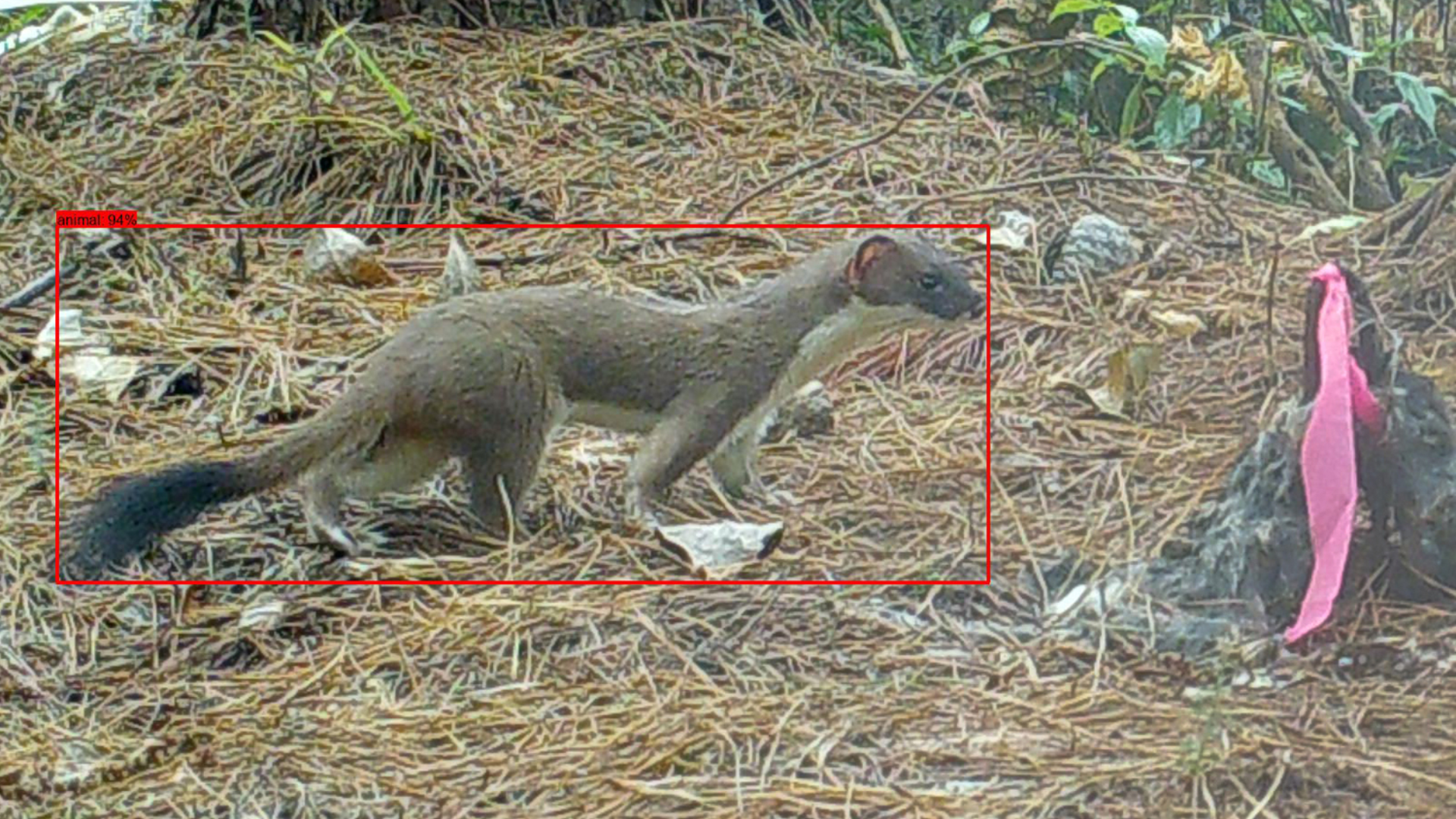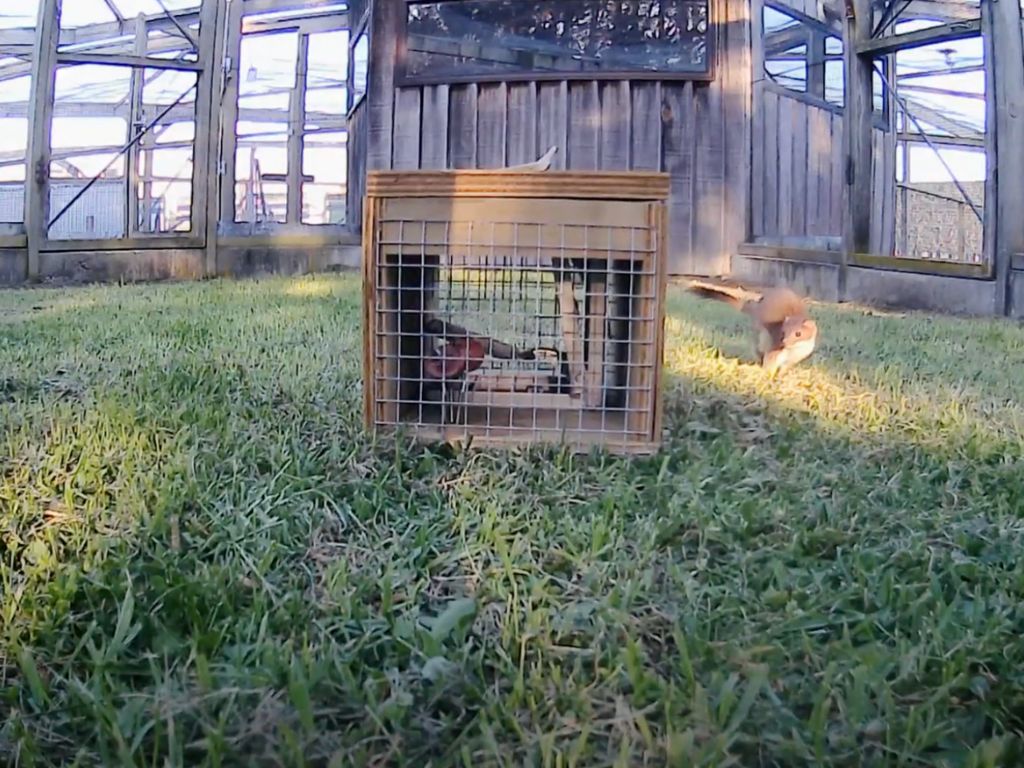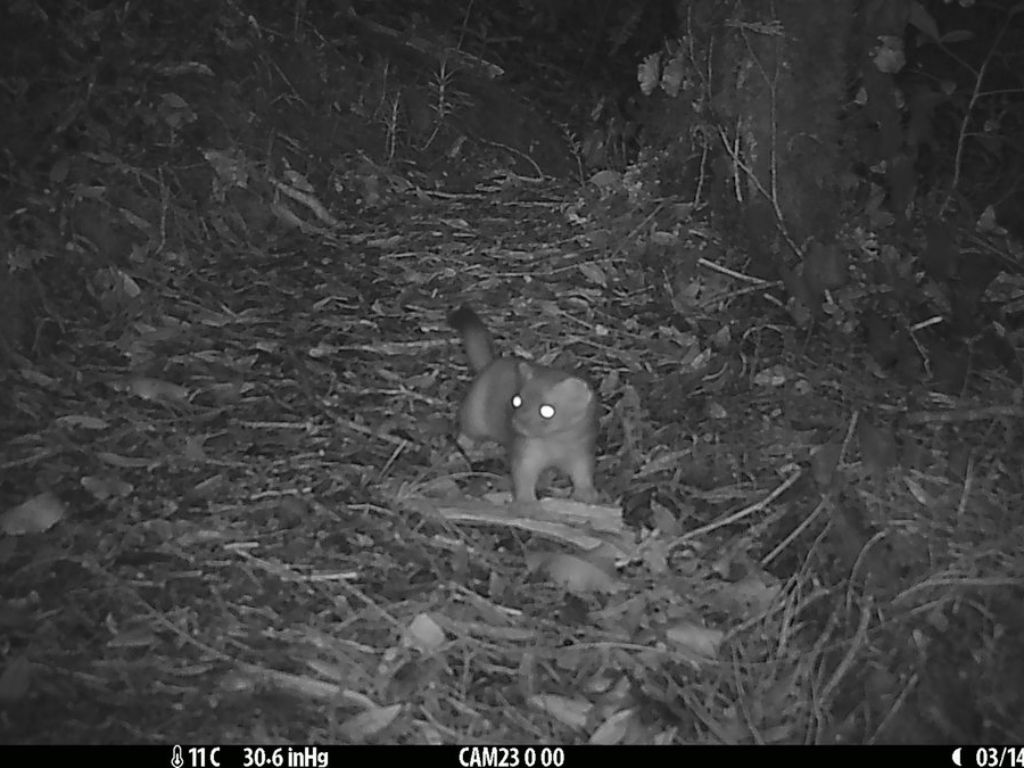Current traps nab more male stoats than females, which is a big problem. Females are basically always pregnant, non-stop baby factories. Researchers say diving deep into stoat personalities and what motivates them could provide an answer.

Current predator control efforts are pretty good at knocking down and suppressing stoat numbers. But the final few survivors standing in the way of eradication prove the hardest to catch and extremely damaging.
So, what is it about these wily survivor stoats, particularly females, that don’t get caught – and what can we do about them?
For the past four years, Manaaki Whenua researchers have been looking into stoat personalities and behaviour to find out.
Fortune favours the shy
Drs. Patrick Garvey and Kyla Johnstone recently tested the responses of wild-caught stoats to three existing types of stoat traps.
Enclosed box traps with a see-through mesh front and back housing a DOC200 were the most effective traps overall, followed by an enclosed tunnel with a modified Victor rat and stoat trap inside.
Stoats tended to interact least with the Goodnature A24 head-up traps.
The adage “fortune favours the brave” apparently does not apply to stoats. The researchers found that fortune favours the shyer, more cautious, less active, and less risk-prone stoats – known as “recalcitrant” animals in pest-control lingo – that are less likely to interact with all types of traps.

Shy female stoats, and female stoats generally, were more cautious and less likely to interact with the traps than male stoats – affirming what is known from field trapping, where captures are skewed towards males.
The traps were disabled so that they could be triggered without harming the animals, allowing the intrinsic behaviours of the stoats to be assessed across different trap encounters.
The experiment was run over 81 nights with 28 stoats – 13 male and 15 female – and the stoats’ behaviour was filmed each night using infrared cameras. The research complied with all relevant animal welfare and ethics requirements.
Compounding the problem of trap shyness, the researchers suspect that they have actually underestimated recalcitrance (a.k.a. shyness) in the wild.
All the stoats in the study had already been caught once, meaning they were the bolder, risk-taking type. This suggested that truly shy stoats might be even more difficult to trap, which itself is an important finding in planning future pest control efforts.
More traps? Think again

The researchers found that stoats that encounter a trap but don’t trigger it can develop a case of “trap shyness”, avoiding traps from then on. Even the best-performing wooden box traps in their experiment caught only three out of four stoats on the first encounter, and no single design worked for every stoat personality.
Less “scary” trap designs, plus more effective baits and lures, are what’s needed for stoat eradication.
The researchers have been investigating this, testing whether different materials (wood vs. plastic vs. metal) make a trap less scary and testing a range of sound, scent, and visual lures to better attract shy individuals.
The next phase of the 5-year MBIE Endeavour Eradication Science programme is all about developing these game-changing lures, with field trials underway across the country.
This article is based on ‘Personality, sex and capture biases: Challenges for predator monitoring and management’ by Kyla Johnstone, Catherine Price, Patrick Garvey, published in the Journal of Applied Ecology.

